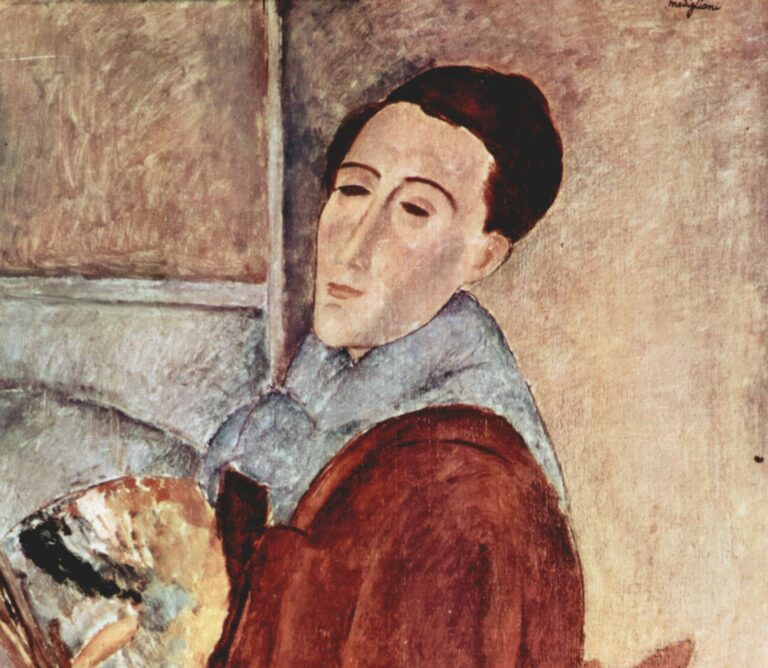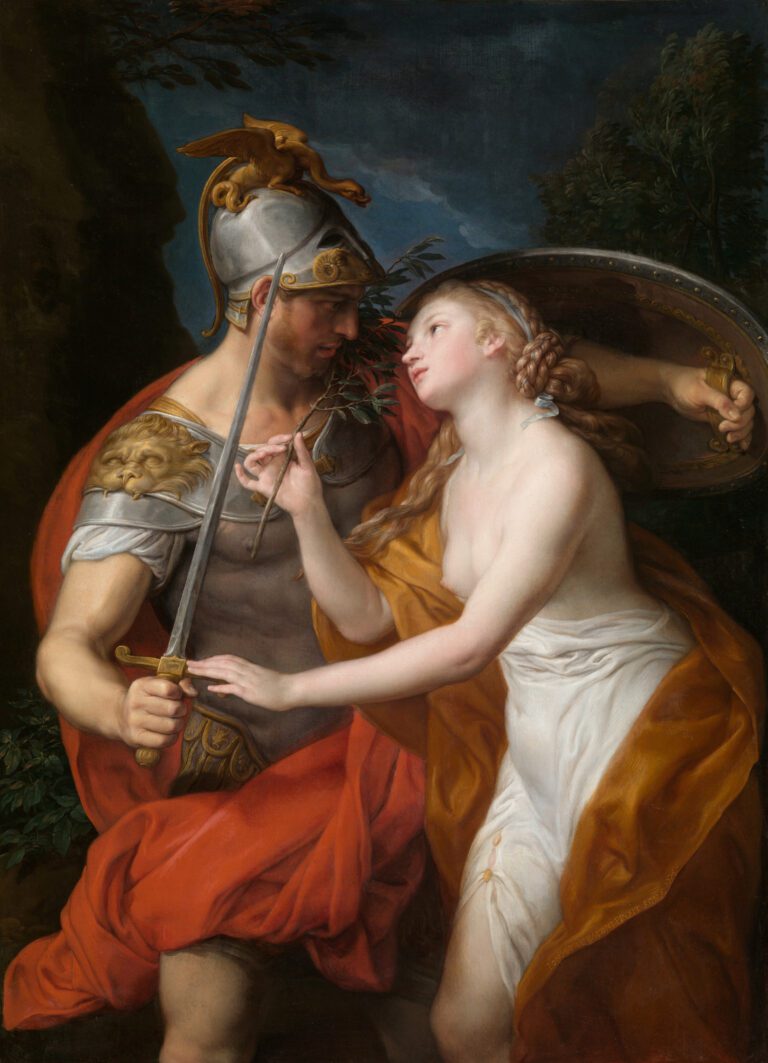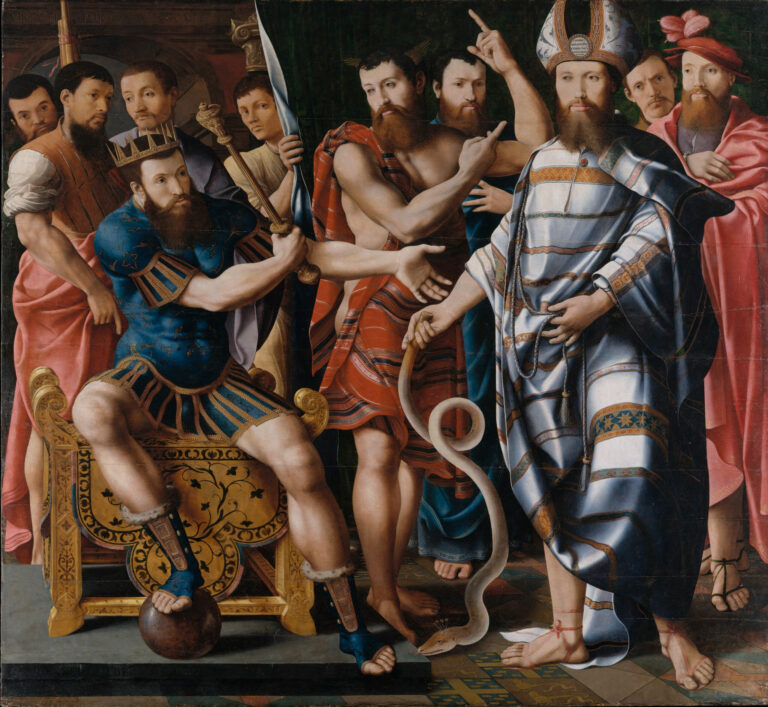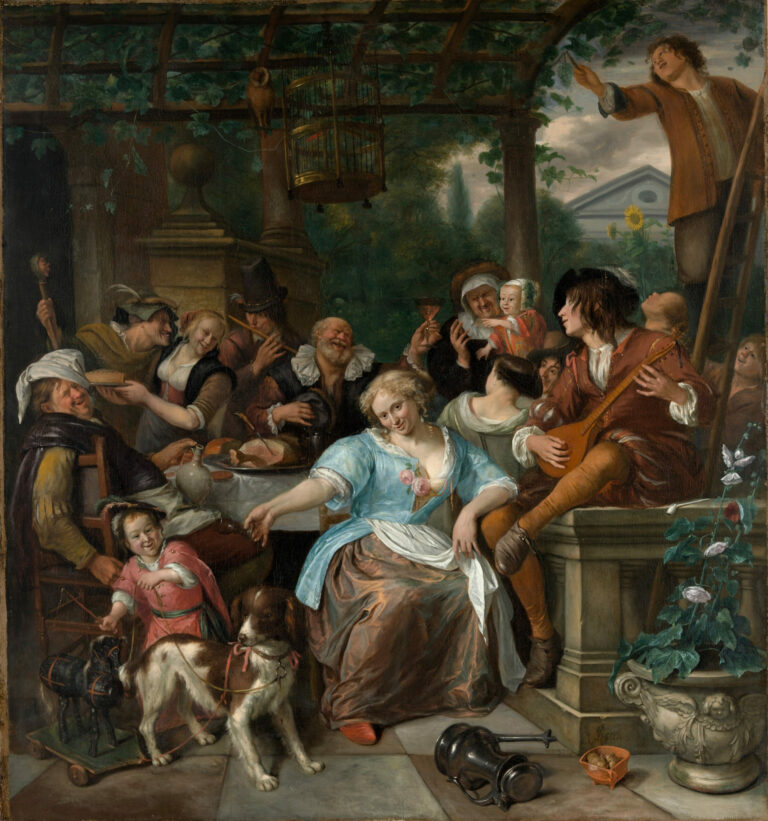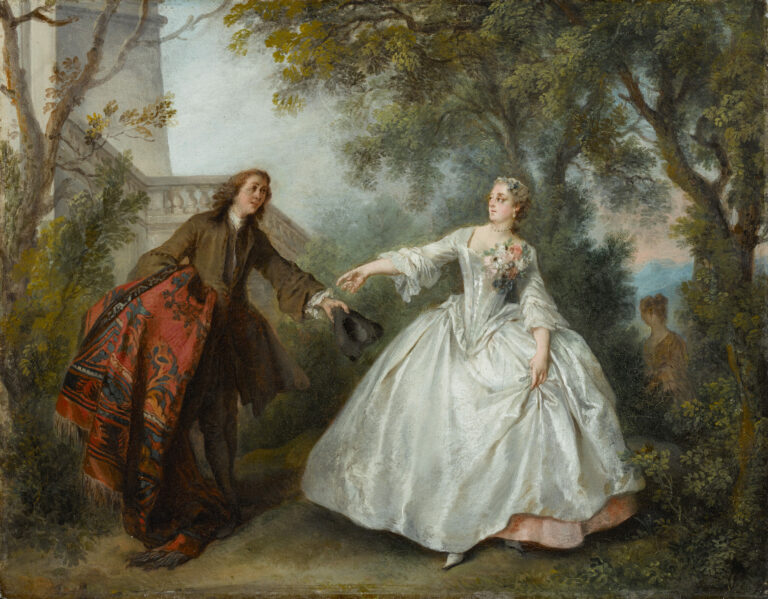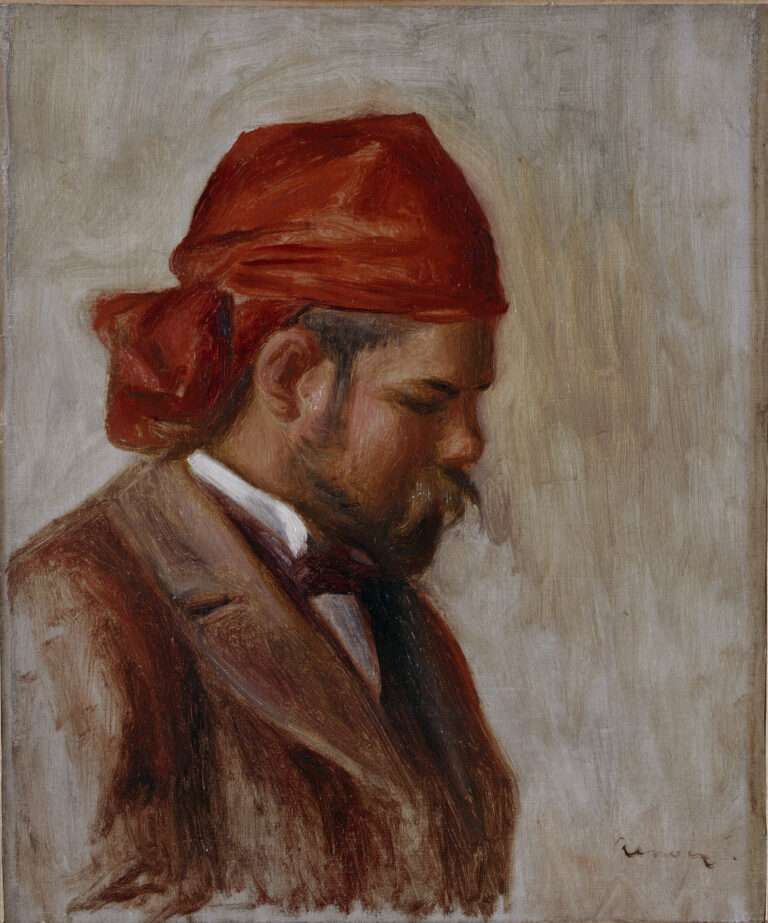
Renoir offers us here a moment of grace where Belle Époque modernity meets Impressionist softness. “By the Seashore” (1883) captures the elegance of a young woman in town attire, her hat delicately adorned with white lace contrasting with her deep blue dress.
Seated in a gracefully curved rattan chair, she stands out against a maritime landscape sketched with virtuosity, where white sails punctuate the horizon of a Norman coast bathed in light.
The pictorial technique reveals a fascinating duality: the face is treated with almost classical precision, while the vibrant background of rapid, colorful brushstrokes recalls Impressionist spontaneity. Green and blue tones blend in a chromatic symphony evoking marine freshness.
Further Context
By the Seashore by Auguste Renoir, 1883
36 1/4 x 28 1/2 in. (92.1 x 72.4 cm)
The Metropolitan Museum of Art, Fifth Avenue, New York, displayed in Gallery 824
https://www.metmuseum.org/art/collection/search/437430
Pierre-Auguste Renoir (1841-1919) is one of the undisputed masters of Impressionism, celebrated for his ability to capture the joy of living and the sensuality of modern life.
This work marks a turning point in his career, created after his journey to Italy (1881-1882), which inspired him to merge Renaissance grandeur with Impressionist luminosity. This period, known as his “Ingres period,” demonstrates his search for balance between tradition and modernity.
His unique technique for rendering flesh and his mastery of light made him one of the most sought-after portraitists of his time.

